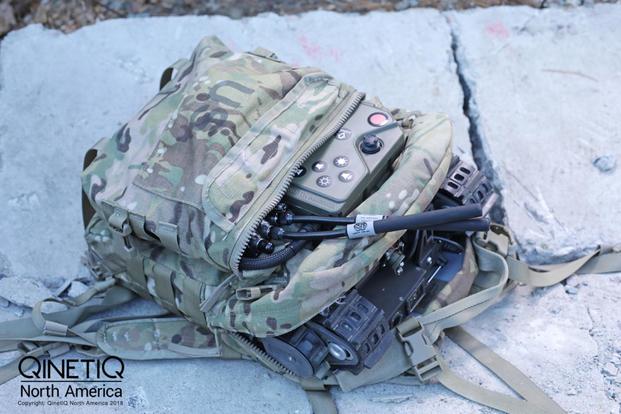

The U.S. Army recently awarded QinetiQ North America a contract worth up to $152 million for special robots that are light enough to be carried in a backpack into combat.
The Common Robotic System Individual, or CRS (I), is the Army’s first “small-sized” robotic program of record, according to a recent press release from the service’s Maneuver Capability Development Integration Directorate at Fort Benning, Georgia.
“CRS (I) is a remotely operated, highly mobile, unmanned ground vehicle that is light enough for a dismounted soldier to carry in a backpack,” the release states.
These new robots, which the Army plans to begin fielding in fiscal 2020, “will provide the dismounted soldier with enhanced situational awareness, force protection and increased standoff capability from enemy threats,” the release adds.
The potential value of the total program could be $429 million over seven years for the delivery of more than 3,000 ground robots, according to a May 22, 2018, QinetiQ North America press release announcing that the company had been chosen as one of two finalists in the program.
The Army selected the Waltham, Massachusetts, firm after its performance during an engineering and manufacturing development competitive run-off test held at Aberdeen Test Center in October 2018, according to the release.
What’s still unclear is the robot’s exact weight. Benning officials said it weighs less than 25 pounds.
The system features a universal controller capable of controlling current and future unmanned air and ground platforms, as well as an “open architecture common mobility platform allowing for future capability growth,” the release states.
Benning, the center for Army maneuver robotic requirements, is hosting a robotic, artificial intelligence and autonomous technologies demonstration next year to showcase new ground, air, water and virtual systems for infantry platoons.
Army leaders have placed a high priority on using robotics and AI technologies to make combat units more lethal for the future battlefield.
— Matthew Cox can be reached at [email protected].
© Copyright 2022 Military.com. All rights reserved. This material may not be published, broadcast, rewritten or redistributed.
